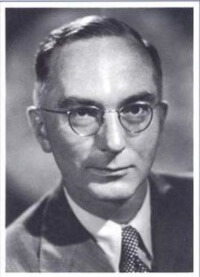Testing the Truth of Man’s Experiences in the In-Between

Man’s existence in the In-Between of imperfection and perfection, time and timelessness, mortality and immortality is indeed not an object of sense perception; and the propositions or a consciousness reflecting on its own structure of participation are indeed self-reflective.
From this state of things, however, it does not follow that we are falling into “subjectivity.” For the process of self-reflection by which consciousness becomes luminous to itself is not a flight of imagination; nor are symbols engendered by the process one more ideology, or one more project of Second Reality.
The effort of self-reflection is real; it is recognizably related to a less reflected experience of participation and its less differentiated symbolization; and the propositions engendered by the effort are recognizably equivalents of the symbols which had been found unsatisfactory and whose want of differentiation had motivated the effort of reflection. Hence, the propositions engendered in a process of self-reflection can be tested objectively, even though we cannot use the tests that we would apply to propositions concerning objects of the external world.
The validity can and must be tested by placing the propositions in the historical field of experiences and their symbolizations, i.e., in the time dimensions of existence itself. The validating question will have to be: Do we have to ignore and eclipse a major part of the historical field in order to maintain the truth of the propositions, as the fundamentalist adherents of this or that ideological doctrine must do; or are the propositions recognizably equivalent with the symbols created by our predecessors in the search of truth about human existence? The test of truth, to put it pointedly, will be the lack of originality in the propositions.
Regarding this test I can be brief, as you will have noticed the numerous allusions to ancient, medieval, and modern predecessors: to Plato and Aristotle, to St. Augustine and St. Thomas, to Bergson and Whitehead. It will be sufficient to recall a few equivalent symbolizations of the central issue, i.e., the experience of participation and the consequent identity and nonidentity of the knower with the known.
That being and thinking are the same, was the insight of Parmenides; that the logos of his discourse was the same as the logos of reality expressed by the discourse, the insight of Heraclitus. The symbolism of participation, of methexis or metalepsis, is both classic and scholastic. Aletheia, with its double meaning of truth and reality, is Platonic-Aristotelian.
The identity and nonidentity of the knower with the known has its equivalent in Hegel’s sophisticated definition of absolute reality as the identity of identity and nonidentity–though in this case our agreement must be qualified because of Hegel’s lapse from the analysis of a structure of consciousness into the construction of a system.
The process of reality is the equivalent of Whitehead’s conception of the experience. The In-Between of man’s existence, then, is Plato’s metaxy. And the virtues of existential tension—love, hope, and faith—are constant symbols from the pre-Socratic and classic philosophers, through St. Paul and St. Augustine, to the present.
The symbolisms of alienation, finally, that can be found in the Hellenic poets and philosophers were collected by Clement of Alexandria on occasion of his struggle with the Gnostic response to alienation, and new varieties of the symbolism were developed by Christians and Neoplatonists. In our own search today, thus, we are indeed engaged in the same search in which our predecessors were engaged in their day.
This excerpt is from Published Essays: 1966-1985 (Collected Works of Eric Voegelin 12) (Columbia, MO: University of Missouri Press, 1990)
